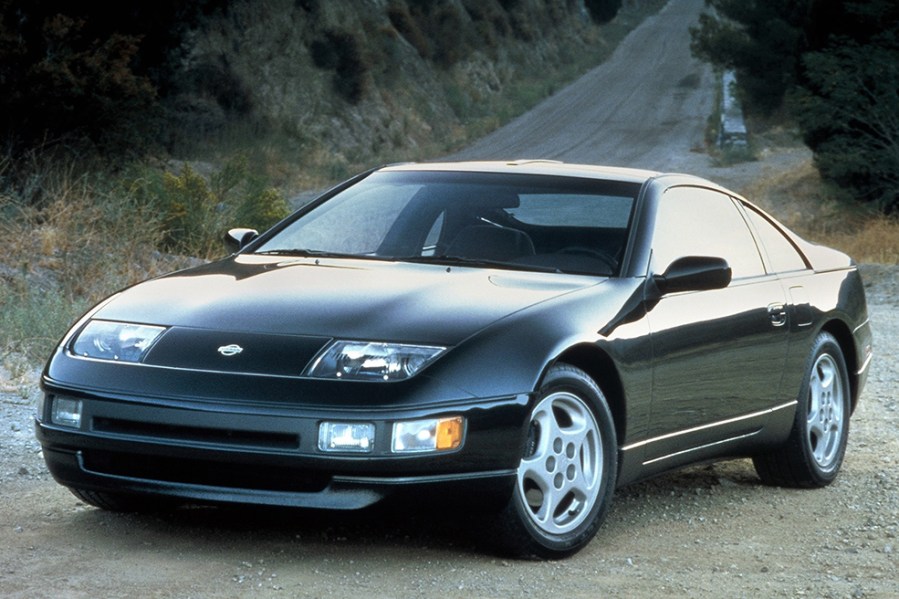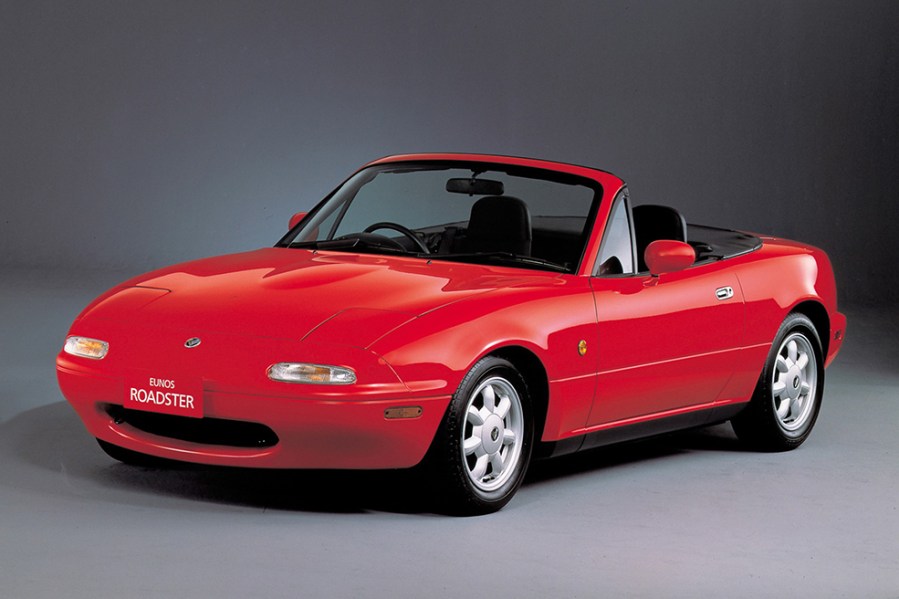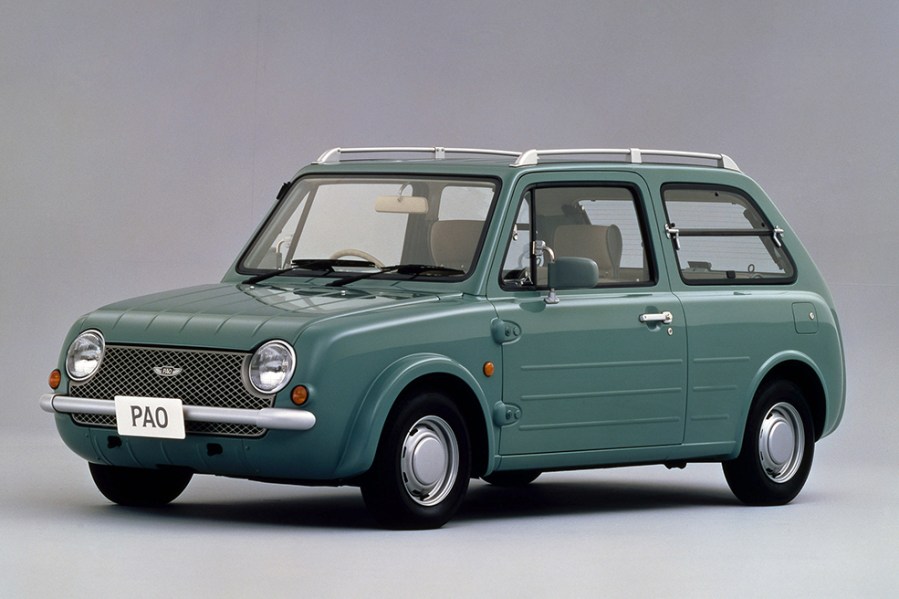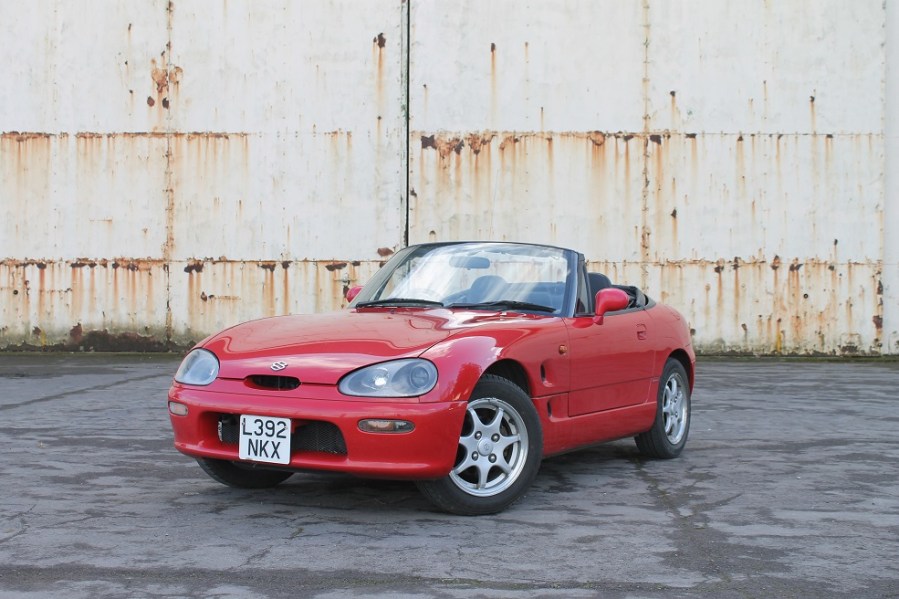Japanese grey import cars were once all the rage, brought to the UK in healthy numbers – which means there’s now an array of different models for today’s classic buyer
Words: Paul Guinness
Honda Beat
Joining Japan’s booming kei car market in 1991 was the Honda Beat, a mid-engined sports car with the kind of handling that could easily have dealt with more than its 64bhp. Still, the engine was a gem – an eager 656cc three-cylinder unit that achieved its maximum output at a buzzy 8100rpm. Top speed was artificially limited to just 87mph, but Honda’s smallest sports car was still hugely entertaining.
The Beat was never officially sold in the UK, although plenty of grey import examples did arrive over the years. In its homeland, meanwhile, it proved to be a niche-market hit, with 33,600 cars built by the time production ceased in 1996.
Grab a grey-import Beat now and you’ll find it fun to drive, cheap to keep and a great summer plaything. You’ll also find it surprisingly well equipped, with every example coming as standard with electric windows and air conditioning.
At just 3295mm, this is a diminutive sports car; but as is so often the case, smaller really does mean more fun. So what if the Beat doesn’t boast neck-snapping acceleration? The emphasis here is on fun, feedback and funkiness. And in all three categories, the Honda still reigns supreme if an eager little soft-top is what floats your boat.
Just watch out for signs of rust and poor repairs, as the Japanese-market Beat was never well-protected against British-style road salt.
Nissan 300ZX
With Nissan determined to reinvent its legendary Z-car range for the 90s, the result was the new-generation 300ZX that made its Japanese debut in the spring of 1989, followed by the sensational Turbo six months later. Although UK sales would begin in 1990, the 300ZX was also a popular grey import; the car officially went off sale in Britain in 1994, but that year’s Series 2 launch (bringing refreshed styling) saw it remain available in Japan through to the end of the decade.
Nissan’s well-proven 3.0-litre V6 was upgraded for the 300ZX, now producing 222bhp thanks to a 24-valve set-up and variable valve timing, resulting in a top speed of 140mph-plus. The 300ZX Turbo brought a whole new level of performance, however, with twin turbochargers and intercoolers pushing power to 280bhp at 6400rpm. Top speed was an artificially limited 155mph, but it was the Turbo’s through-the-gears acceleration that really impressed, with 0-60mph in an adrenalin-surging 5.6 seconds – a supercar-like figure back then.
Handling was equally impressive, with the mid-engined 300ZX’s independent coil-sprung multi-link system and electronically adjustable shock absorbers being tuned to perfection. Front and rear stabiliser bars and a limited-slip diff completed the standard handling package. And the whole driving experience was made even more special by the four-wheel steering (officially known as High Capacity Actively Controlled Steering) fitted as standard to the 300ZX Turbo.
The 300ZX also offered a choice of standard or targa roof options and two-seater or 2+2 layouts, although not officially in the UK. Here we had just the 2+2 Targa Turbo, which arrived in April 1990 and remained on sale for only four years, its career cut short by changes in European emissions regulations. The motoring press certainly fell for the 300ZX’s heady cocktail of power, handling and sheer brute force, with Autocar hailing the Turbo as ‘Japan’s best GT’.
Secondhand examples continued to arrive on these shores via the grey import route, of course, and Japanese-spec versions of the 300ZX attracted their own loyal following. An ‘official’ UK 300ZX is likely to be a manual-transmission Turbo, but Japanese-spec cars often come in normally-aspirated guise with automatic transmission.

Eunos Roadster
One of the most prolific Japanese grey import cars of its time was also a major hit here in official UK-spec guise, albeit with different badges. What we knew as the Mazda MX-5 was sold in its homeland as the Eunos Roadster, following the creation of Eunos as Mazda’s new upmarket brand. It was hoped that Japanese enthusiasts would see it as a sportier marque than Mazda, which explains why the Xedos 6 saloon was sold in Japan as the Eunos 500.
Unveiled in 1989 and on sale for eight years, the original Eunos Roadster was an instant success, its cute retro-inspired styling (with obligatory pop-up headlamps), rear-wheel drive traditionalism and lively engines appealing to large numbers of enthusiasts who’d been starved of mass-market roadsters throughout the decade.
The Eunos was developed in line with the MX-5, with the same upgrades carried out over the years. And like the MX-5, the Roadster was also treated to various limited-edition versions, with the V-Special, V-Special Type II, J Limited, S Limited, Tokyo Limited, VR Limited, R2 Limited and SR Limited being among the specials produced for Japanese buyers by 1997. Watch out for these when Eunos shopping, as they add an interesting twist to the whole Roadster theme.
Eunos grey imports became a common sight in the UK, and can still be found in healthy numbers. Apart from different badging, a different back panel (to accommodate a square Japanese number plate) and other minor changes, it’s very much the same breed as any MX-5 – and so owning an Eunos instead of a Mazda presents no hardship. You will, however, find some quirks in terms of spec; automatic transmission was popular among Eunos buyers, for example, a feature that can deter some enthusiasts on today’s market.

Nissan Figaro
Although just 20,000 Figaros were built in total, they’re no longer a rare sight on UK roads thanks to the dedication of enthusiasts and specialists in this country. Indeed, estimates suggest that around 20 per cent of all Nissan Figaro examples built are now owned by Brits.
The Figaro dates from a fascinating era for Nissan, with a host of limited-run retro-style models being built by the company’s special projects division, known as Pike Factory. The process started with the cute Be-1 three-door hatch of 1987, followed by the quirky S-Cargo panel van and the utilitarian-looking Pao hatch two years later. But it was with the Figaro of 1991 that Pike Factory created its biggest news story, with the original sales expectation of 8000 units being well and truly smashed during the newcomer’s only year of production.
The Figaro was based around the ‘K10’ Micra platform, with a turbocharged (MA10ET) 1.0-litre engine providing the power. Output was a healthy 75bhp, endowing the lightweight (810kg) Figaro with lively enough performance; three-speed automatic transmission came as standard, although round town the car still had a sprightly feel. It also handled well, aided by all-round independent suspension with struts up front and a four-link set-up (featuring an anti-sway bar) at the rear, while rack and pinion steering added some extra precision.
For the 20,000 Japanese who bought a brand new Figaro, the car’s appeal lay more in how it looked than how it drove, its white-roofed retro styling being complemented by a choice of four different pastel shades: Emerald Green, Pale Aqua, Lapis Grey or Topaz Mist. The first three colours featured on 6000 cars each, but just 2000 of the Topaz Mist models were built in total, making this by far the rarest Figaro colour scheme.
The Figaro was well finished inside, with the 50s theme continuing via a body-coloured dashboard top, horn button, carpet and seat piping. The cream-coloured steering wheel and leather seats provided a neat contrast, while chrome-rimmed instruments continued the nostalgic theme.
Nissan Pao
Arriving two years before the aforementioned Figaro, the Pao was a remarkable success story for Nissan’s Pike Factory project. Launched in 1989 and remaining in production for just a couple of years, the limited-run Pao was a brilliant reinterpretation of utility-style motoring. Unashamedly retro in style, it offered the practicality of a four-seater hatchback layout but combined with enough quirkiness to make it really stand out from the crowd.
Nissan announced at the start of 1989 that the new Pao’s order book would stay open for just three months, and as a result it was massively oversubscribed. Potential owners loved its ’60s-influenced looks and no-nonsense approach, resulting in far more orders than there would be cars. In the end, Nissan produced 51,000 Paos but could have sold many more. Obviously, British buyers were never officially offered the Pao, although a healthy number of grey imports have since arrived here.
The underpinnings of the Pao were predictable, with the K10-series Micra platform and 987cc engine (pushing out 51bhp when new) being put to good use once again. Stylistically though, the Pao was in a class of its own, its ribbed side panels, external door hinges, flip-up rear side windows and horizontally split tailgate all combining to offer a pleasingly retro look without being too kitsch.
A low-mileage, well-maintained Pao is still a pleasant car to drive, with rack and pinion steering, all-round independent suspension and front disc brakes ensuring a degree of modernity. It’s also a fairly generous four-seater for its size, with superb visibility and easy manoeuvrability making it ideal city transport.

Mitsubishi Delica
The most obvious 4×4 to include would have been the Mitsubishi Pajero, the Japanese-market version of what we knew as the Shogun. But let’s be a bit more creative by featuring another all-wheel drive Mitsubishi that became a prolific grey import: the Delica Space Gear, a model that combined the commodious advantages of an MPV with the off-road capability of an SUV.
The Mitsubishi Delica name goes way back to 1968, when it was used on a half-tonne pick-up truck. Van and passenger-carrying versions arrived in ’69, but it wasn’t until a decade later that the first four-wheel drive Delica was let loose in Japan – a go-anywhere version of the van we knew in Britain (in two-wheel drive guise) as the L300.
The version that made it big as a UK grey import, however, is the Delica Space Gear, which arrived in 1994 using an updated version of the first-generation Pajero’s chassis and running gear: the same engines, same dual-range transfer box and same transmission. And in the case of the example shown here, that meant a torquey 2.8-litre turbo-diesel engine with intercooler, linked to a three-speed automatic transmission and part-time twin-range four-wheel drive.
The Delica Space Gear is a practical device, offering a phenomenal amount of on-board space within a regular car’s footprint. Access to the centre and rear seats is easy thanks to the single sliding door on the nearside; and with one-third of the centre seat folded away, it’s simplicity itself to clamber on to the back row. Thanks to the Delica’s generous ground clearance and tall styling, everyone on board gets to enjoy a high-up seating position and fantastic visibility; and even when used as a seven- or eight-seater, the Space Gear still manages to offer a reasonable amount of ‘boot’ space.
Like its Pajero cousin, the Delica uses rear-wheel drive for normal on-road use. But when the going gets tough, it’s easy to select high-ratio four-wheel drive, with low-ratio gearing on tap for more severe off-roading. And don’t let appearances deceive you, because the Delica really is a capable machine away from the tarmac.

Suzuki Cappuccino
Like the Honda Beat above, the tiny Suzuki Cappuccino (with about the same footprint as an MG Midget) was the product of the Japanese Domestic Market’s appetite for kei cars of all kinds. Its 657cc engine was turbocharged and intercooled to produce 64hp, with a tachometer that ran all the way to 12,000rpm; the Cappuccino was faster than its Honda rival as a result, while 50/50 weight distribution ensured it could keep up in the corners too.
A unique selling point was the Cappuccino’s cleverly designed folding roof arrangement, which incorporated three centre panels plus a foldaway rear window and roll hoop. The car could be configured as a T-top (with centre panel in place, targa (all panels removed) or a full open-top with everything stowed. The three panels even fitted in the boot, each with its own leatherette storage bag.
The Suzuki Cappuccino was officially imported to the UK in small numbers, with not much more than 1000 examples registered on these shores exclusively with red or silver paintwork. Grey imports are therefore easier to spot quickly in the classifieds as JDM customers were offered a wider choice of colours alongside those shades.
As with any old Japanese car, rust is the Cappuccino’s main enemy. Those roof panels and associated rubber seals mean leaks can also be a problem – and the associated rot means finding a solid car today can be a challenge. It’s worth noting that even an externally clean example can hide all manner of expensive holes and water traps, so be sure to get a second opinion before buying.






